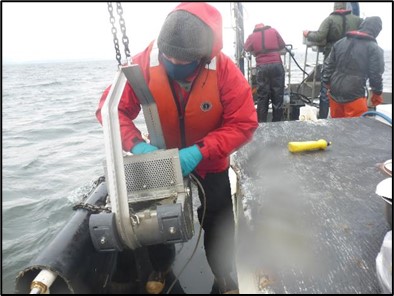Metro Vancouver Iona and Lions Gate Sediments Effects Survey
Client:
Metro Vancouver
Location:
Vancouver, British Columbia, Canada
Dates:
March 2020 – December 2021
Background:
The Sediment Effects Surveys (SES) are a key component of the receiving environment monitoring for the Iona Island and Lions Gate wastewater treatment plants (WWTP). These surveys are conducted annually as part of Metro Vancouver’s Integrated Liquid Waste and Resource Management Plan (ILWRMP), which includes monitoring, assessment, and forecasting of the effects of the liquid waste discharges to the Strait of Georgia and Burrard Inlet. The 2020 and 2021 SES followed the established study design and sampling methods to ensure continuity of the program and to build on the long-term dataset available for assessing the potential effects of the WWTPs on the marine environment.
The SES evaluate the potential environmental effects of WWTP discharge on the sediment environment and benthic infauna. The studies assess sediment quality for key physicochemical and bacteriological characteristics and examine benthic invertebrate infaunal abundance and diversity to identify potential effects from WWTP discharges. The program integrates multiple lines of evidence on the physical, chemical, and biological characteristics of the sediments to identify the extent and magnitude of effects from the WWTP.
Services Provided:
For each of the two programs in 2020 and 2021, Hatfield led the field programs, interpreted the results, and communicated the findings in written reports and in technical presentations. The field programs collected sediment samples using a 20 m long research vessel equipped with a winched Van Veen grab sampler for sampling at depths ranging from 20 m to 80 m. Sediment samples were processed and sent to analytical laboratories for evaluation of ~400 analytes (including PAHs, PBDEs, metals, hormones, and bacteriology) and infauna taxonomy. Musqueam worked with Hatfield to collect data for the Iona program in 2020.
The interpretation of results was focused on the following objectives:
- Characterize the spatial extent and distribution of the chemical constituents measured in the sediments;
- Assess sediment sample quality in the outfall exposure area(s) relative to relevant environmental quality objectives and guidelines;
- Assess spatial differences in the infauna community composition as well as relationships with sediment chemistry data as it relates to effluent discharge and its effects; and
- Compare data with prior years (i.e., 2003-2019) to determine whether trends in sediment quality or infauna community structure exist.
Hatfield applied a variety of technical and statistical tools to address these objectives, including detailed screening of the results to environmental quality thresholds, multivariate statistical models to identify trends and examine the spatial extent of potential wastewater effects, and a weight-of-evidence integration to objectively assess the results. Detailed technical reports were produced for each cycle of the survey, along with technical presentations and plain-language summaries to communicate the results.
